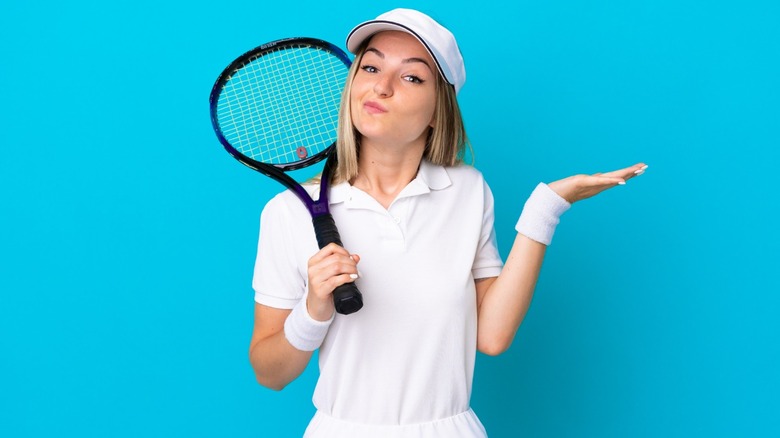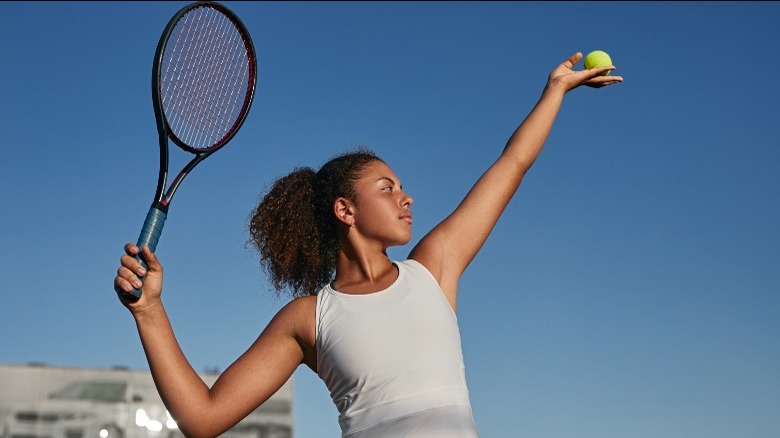Which Muscles Are You Working When Playing Tennis?
If you love getting in forehands and backhands as part of your regular exercise routine, you're in good company. According to the United States Tennis Association (USTA), tennis has surged in popularity over the past few years. In fact, the number of Americans who engaged in tennis rose by 22% in 2020, reaching nearly 22 million people.
Tennis has long been touted as a sport that provides excellent health benefits. Whether you're a pro or a newbie, 30 minutes of tennis five days a week aligns with the CDC recommendation of 150 minutes of moderate physical activity a week — and it is also a fun way to stay healthy! Unlike some sports and workout activities, tennis requires you to use your entire body. Tennis engages your core, helps to improve balance and coordination, increases your stamina for your daily activities, helps with weight loss, and strengthens muscles throughout your body (via WebMD).
Play tennis if you want to work these muscles
Tennis requires you to run across the court and move your arms in a variety of ways. As a result, most of your body will feel the effects. While you wouldn't think swinging a racket builds up your core, Nelo Phiri, a tennis coach at Life Time Westchester, tells Bustle that the arm motions you use during tennis engage your abdomen muscles. Hitting forehands, backhands, and delivering serves engages the entire body, adds physical therapist Sandra Gail Frayna. And because you often squat and keep your body low while playing tennis, your glutes and quads also get an excellent workout.
And, of course, tennis will improve arm strength from your shoulders down to your forearms. You might not think your forearms are particularly engaged while playing tennis, but simply gripping the racket activates this area. The stronger your grip and your forearms, the stronger your swing.
Keep in mind, though, that because tennis is an active sport, there's a chance for injury. So you should warm up with stretches, take breaks to avoid overexertion, and wear shoes that fit correctly and provide your ankles and arches with adequate support. Also, depending on whether you are playing on a clay court or hard court, make sure you wear the appropriate kind of sole (via MasterClass).


